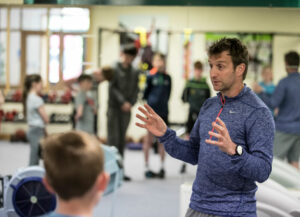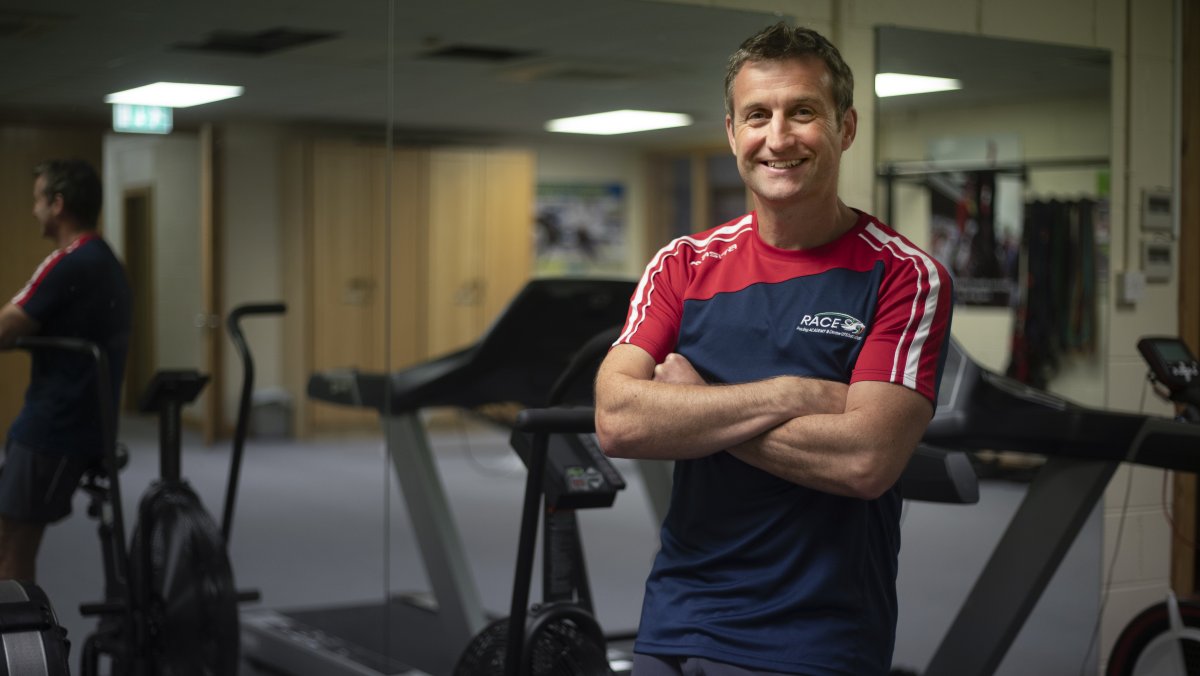Introduction
Our latest Setanta Student Story features Wayne Middleton, a Setanta graduate and S&C coach currently working with licenced jockeys through Equuip, along with his own personal training services.
Below, Wayne provides an insight into his career journey to date, his experience of working with professional jockeys and his experience of studying with Setanta.
Career Journey to Date
With a passion for fitness and running from an early age, it was after a few years of working within a number of different jobs that Wayne decided to pursue a career in the industry.
Having initially become a qualified personal trainer and working in various gyms, he began to attend different workshops ran by the IRFU and the UKSCA.
“With a bit of extra experience and knowledge I began getting involved with local sports teams and delivering physical preparation plans. I began studying for a BSc degree in Strength & Conditioning with Setanta College. The format of the blended learning was a game changer and allowed us to work and study. It was very challenging as I had no real experience of studying, researching and writing. I cringe when I look back at some of first assignments! But I really enjoyed the 4 years of learning with Setanta, especially the practical workshops. I made friends with many coaches also and would still contact many of them.” Wayne continued to work with a range of teams and individual athletes, first beginning to work with jockeys in 2015. He also continued to further his education in areas such as concussion and female physiology. This journey has brought Wayne to his current role with Equuip (HRI), along with his own personal training groups – spanning a range of different populations including the active retired.
Working with Professional Jockeys
Wayne provides an interesting insight into his current role with Equuip and working with professional jockeys.
“My current role involves delivering athletic development work to licenced jockeys and I work with our Physio Lead to deliver S&C to injured jockeys returning to ride. I am also a cog in the High Performance MDT with our CMO, Physio, Dietitian and Sports Psychologist. Every week is different and that is one thing I love about the role. Within the last 12-16 months we have seen a shift in the culture towards S&C among jockeys and with our Physio now onsite we can expose more jockeys to the gym! Their daily work is physical and they often work 7 days per week. I have great admiration and respect for them. Although my role is a lead role I am still in a support role for the athletes and that is how we all approach the job.
On a non-clinic day, I will be in the gym with jockeys helping them to improve strength/fitness and manage their weight. On a clinic day, I will be working mainly with injured jockeys and I will be providing S&C support and assisting them in their journey back to riding.“
Unique S&C Demands
With the unique demands of horse racing on athletes, Wayne outlines how the approach to S&C with jockeys and the different aspects that are covered.
“The physical demands of race riding are indeed very unique. Although generally classed as an intermittent sport, there are many challenges that jockeys face. A thoroughbred horse weighs 500kg and jockeys weigh between 50-60kg so their strength and skill are phenomenal!
Generally, those jockeys that are race riding regularly will be “race fit”, very similar to a player in team sports – if they are playing regularly they are generally ok. With those jockeys any work we do is generally with a view to injury risk reduction/prevention and if they are keen then raising the bar for more strength.”
Working with jockeys that are not riding regularly requires a different approach, he outlines.
“For those jockeys that are not race riding regularly, we are constantly trying to keep their fitness and strength levels high to match the demands of race riding. This is challenging as we probably can’t 100% match the demands of the sport while off the horse. But we can get very close and we have some very strong and powerful jockeys! We regularly have jockeys deadlifting x2 their bodyweight. We have jockeys reaching up to 65 ml/kg/min. So lots of strength and isometric work and high-intensity intervals (85-90% MHR) for fitness.
What’s really important is the physical condition of the jockey when they come in. This might sound obvious but quite often they might not have eaten that day so we have to manage the sessions accordingly.”
Culture Change
 Wayne outlines the change in outlook towards S&C that is currently taking place within the industry.
Wayne outlines the change in outlook towards S&C that is currently taking place within the industry.
“Historical culture and practice would have led jockeys to believe that lifting weight would lead to weight gain. Thankfully, through education and buy in this has changed and is to continuing to change. However, not everybody agrees or values S&C or athletic development but the tide is turning.
Up until recently, we had no onsite physio so trying to centralise injury supports was challenging. With our Physio on site 3 days/week we now have jockeys travelling from Tipperary, Wexford, Limerick, etc. for treatment and S&C support.”
WM Fitness and Studying with Setanta
Regarding his personal training business, Wayne outlines how his philosophy is “to keep my groups fit, strong and well for general health. We work with all ages from 24 up to 84! I’m very passionate about the health benefits of being strong and fit. Many of my group are parents themselves do the example they set to their families is crucial.”
From his time studying with Setanta, outlines some of the most beneficial aspects and takeaways from the programme.
“Meeting like-minded coaches and learning from lecturers who were also coaches. Learning from Dr. Liam!
Remember there must be a transfer to the sport in all the work you do otherwise, why do it? Test and assess regularly. Ask for help and advice. Share knowledge. Make sure your practice is evidence-based.”
He also shares some advice for those interested in pursuing a career in coaching.
“Don’t be afraid to ask for help. Share knowledge with others. Mistakes are learnings. Make sure you stand by your work and it is evidence-based. Be patient.”


Leave A Comment